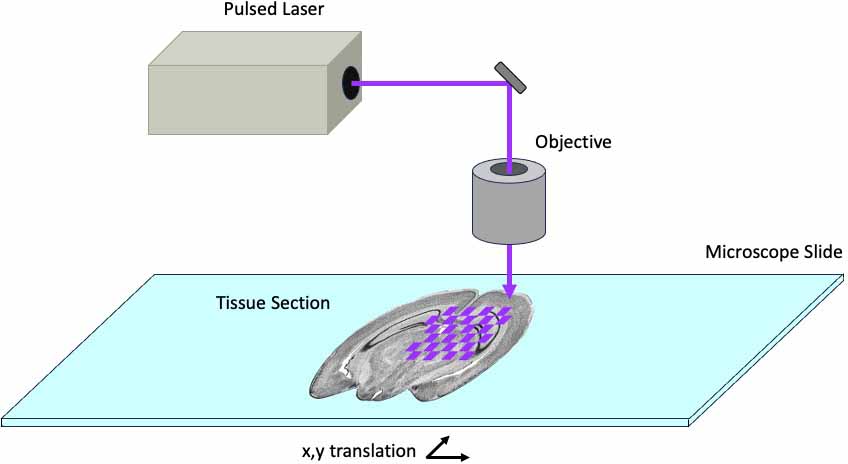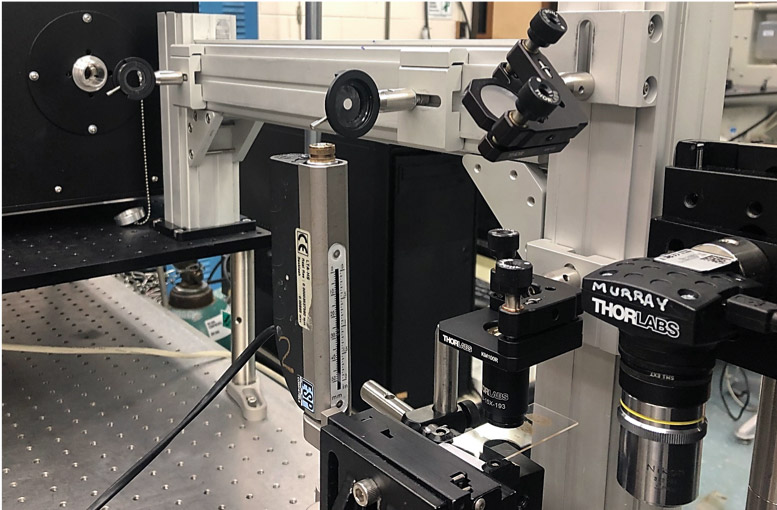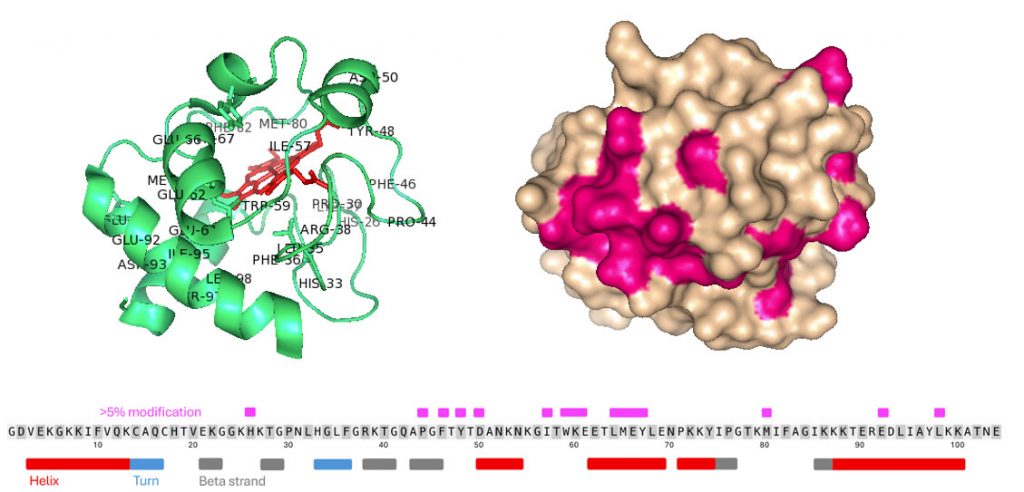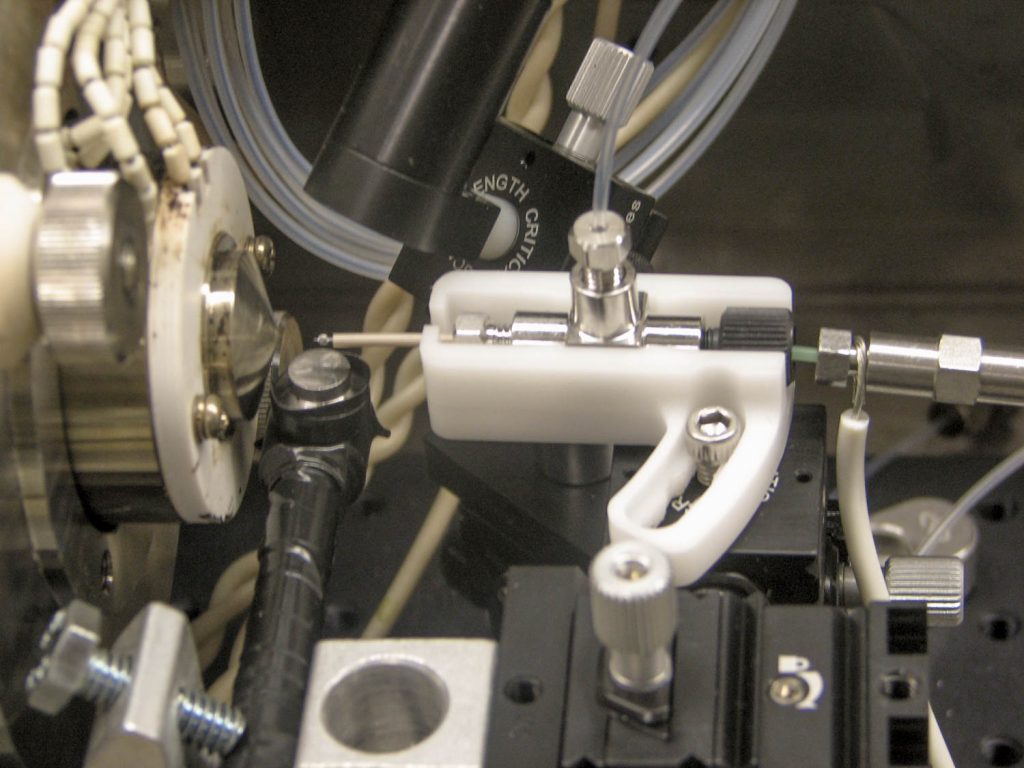Research projects and products under development at Laser Bioanalytics
Photochemical MALDI Tissue Preparation
This project is funded by the National Institutes of Health project number 1R43GM156259-01, “Photochemical Tissue Modification for MALDI Mass Spectrometry Imaging”
Determining the structure of lipids in tissue is important to understanding biological systems and diagnosing and treating diseases. The goal of this project is to develop a new device for patterned photochemical modification of lipids in tissue to enhance structure determination by imaging mass spectrometry. The system uses pulsed ultraviolet and visible laser beams to drive photochemical reactions in tissue that allow the structure and distribution of lipids in tissue sections to be determined.

Deep Ultraviolet Laser Ablation Microdissection
Extracting biomolecules from localized regions of tissue is important to understanding biological systems at the cellular scale and for diagnosing and treating diseases. The goal of this project is to develop a new instrument for laser microdissection of tissue regions using deep ultraviolet laser ablation microdissection to precisely sample tissue regions. The instrument has advantages over current commercial technology in precision, extraction efficiency, and molecular integrity.

References
- R.O. Lawal, L.T. Richardson, C. Dong, F. Donnarumma, T. Solouki, K.K. Murray, Deep-ultraviolet laser ablation sampling for proteomic analysis of tissue, Anal. Chim. Acta, 1184 (2021).
Photochemical Laser Microdissection
Chemical characterization of tissue requires a fast and efficient methods for spatially resolved chemistry and analysis of the constituent biomolecules. The goal of this project is to develop a new method for laser microdissection of tissue sections that combines laser photochemistry with laser microdissection. The dual ultraviolet and infrared laser system is built with a novel optical setup for localized protein labeling and sampling that allows the selection of multiple tissue regions for spatial omics analysis by mass spectrometry and other quantification and identification methods.

References
- R.O. Lawal, F. Donnarumma, K.K. Murray, Electrospray Photochemical Oxidation of Proteins, J. Am Soc. Mass Spectrom. 2019, 30, 11, 2196–2199.
Deep Ultraviolet Laser Ablation Ionization
Mass spectrometry allows the localization of biomolecules in tissue and is important for both fundamental and translational biological research because it is both general as well as broadly applicable. The spatial resolution of laser-based mass spectrometry imaging is fundamentally limited by the wavelength of the laser used to form the ions. This project uses a patented method for ionization based on laser ablation with a short-wavelength ultraviolet laser.

References
- R.O. Lawal, F. Donnarumma, K.K. Murray, Deep-ultraviolet laser ablation electrospray ionization mass spectrometry, J. Mass Spectrom.54 (2019) 281–287.
- Y.H. Rezenom, J. Dong, K.K. Murray, Infrared laser-assisted desorption electrospray ionization mass spectrometry, Analyst. 133 (2008) 226–232.